Discover More...
Search Listings
Find Local Businesses...
Search the Directory
Information and links
Find Us
How can we help?
Shipston’s Heritage
Shipston’s Heritage
Great for: History Outdoors Villages
Immerse yourself in the history of Shipston and the Stour Valley as you visit towns and villages steeped in heritage. You can follow this route, or cherry pick the villages and places that most appeal to you.




The Stour Valley, situated in the Warwickshire Countryside at the edge of the Cotswolds, has abundant charm. Characterised by agricultural influences, with the evidence of ridge of furrow use across the farmed landscape much of the area is dedicated to cultivation or sheep rearing. This itinerary takes you from the rich heritage of Shipston-on-Stour, around parts of the Stour Valley, stopping at places steeped in history.
Shipston-on-Stour
Right in the heart of the Stour Valley, the beautiful market town of Shipston-on-Stour has been recorded since at least 772 AD. Originally home to the Hwicce tribe and known as Scepweastune (Sheep wash town) it has evolved into the modern Shipston-on-Stour. In 1268, the town was granted a Royal Charter by Henry III to hold a market. The town was given to the Bishop of Worcester where it sat as an island of Worcestershire until 1932, when it was absorbed back into Warwickshire on April Fool’s Day.
As the river is such an important influence on the town’s history and association with the wool industry, your day starts at the riverside to admire the post-medieval stone Barcheston bridge enabling the crossing of the river Stour, now listed due to its historical importance.
From there, wander around the streets and appreciate the fine Georgian architecture. Shipston’s affiliation with sheep and the success of the weaving industry that was based in the town allowed the town to flourish, and this success is reflected in the many attractive buildings in and around the town centre.
Sheep Street was the main street while Market Row was originally a series of booths for traders. Sheep were driven through the Shambles – a series of narrow alleyways – to be slaughtered in the street ready for butchery. Now, a medical herbalist Little Bird Soaps and the Cottage Garden Florist can be found in the Shambles, so explore their gifts and wares.
Read fascinating insights into the history of the town at the information boards in the town’s car parks. Each board has a snippet of history relating to that area of the town and can be found at High Street, Bridge car park, Mill Street car park, West Street car park and Telegraph Street car park.
Mooch in the independent shops that make Shipston a unique place to shop. Find beautiful things in the home from Richard Harvey, Time in Hand or Mad Mollys and find an outfit from No. 1, Dice, Home and EH Spencer.
Next, visit Shipston Museum where Shipston and District Local History Society has catalogued artefacts dating back to the Roman times as well as photographs and memories associated with the town. Tap into the encyclopaedic knowledge of the museum’s volunteers as you explore the collection and uncover stories on Shipston’s history, people, events, industry and families.
Now, it’s time for lunch! Relax in Georgian splendour in the beautiful George Townhouse on the High Street. Enjoy scrumptious lunches and dinners in its restaurant while imagining the stagecoaches stopping here on their way from Birmingham to Oxford.
Now you’ve replenished your energy, it’s time to explore the local villages around Shipston. As you travel around the area, look out for the Scots pines, marking the route to London for the Welsh cattle drovers from the 14th to the 19th century.
Sheldon Tapestries and Barcheston Church
Barcheston Church has a monument to the history of the battle of Edgehill in 1642. However, the Church has only limited opening.
Barcheston is famous for being the home of the famous tapestry making Sheldon family started by William Sheldon in 1560. Woven in wool and silk, the Sheldon Tapestry Maps are a fine example of early cartography covering the counties of Warwickshire, Worcestershire, Gloucestershire and Oxfordshire. Whilst parts of the map are in private hands, two sections of the map are now held at the Bodleian Library. The Warwickshire section of the map, the only section entirely intact, is at Market Hall museum in the heart of Warwick.
Long Compton
Due to the vicinity of the Rollright Stones, Long Compton has always attracted witches. This pretty village of honey coloured Cotswold stone and thatched cottages was once the alleged home of 17 witches, and allegedly the place of a witch murder in 1875! Nowadays, Long Compton is a peaceful place to stroll whilst visiting the church where the yew tree lined walkway is through an interesting two-storey timber framed cottage forming the lych gate. Whilst in Long Compton, take time to visit the farm shop and pub.
Rollright Stones
Just to the south of Long Compton is the Rollright stones, a 5,000-year-old piece of history, The Whispering Knights Dolmen is the old burial chamber of a Neolithic long barrow. The Knights are 5 stones that lean in towards each other, hence the name. Nearby is the King Stone and there are suggestions that it might be astrologically aligned with the King’s Men. These stones form a perfect circle 104 feet (38 Druid Cubits or megalithic yards) across and stand on a prehistoric track way at the edge of a ridge. Currently 77 stones remain out of the suggested 105 but counting them can be a challenge – see if you count the same amount each time you go round the circle! The stones are astrologically aligned and suggest that the understanding of the stars is far older than originally thought. From the ridge there is a wide-ranging view, especially northwards standing by the King Stone. There is an ancient story that a witch turned a would-be King of England into the King Stone, as he could not see Long Compton from the ridge of the hill. The witch then turned herself into an elder tree.
The Four Shires Stone, Moreton-in-Marsh
The Four Shires Stone is an 18th Century square stone pillar, topped by a sundial and stone ball, which marks what used to be the junction of four counties (Oxfordshire, Gloucestershire, Warwickshire and Worcestershire). It still stands at the junction of the first three counties, just outside of Moreton-in-Marsh on the A44 to Chipping Norton. Due to county boundary changes, the Worcestershire lands owned by the Bishops of Worcester were transferred to Gloucestershire in the 1930’s. Whilst there is no written evidence, the Four Shires Stone is said to be the inspiration for J.R.R. Tolkien’s Three Farthing Stone, marking the centre of the Shire in Tolkien’s Lord of the Rings.
The Fosse Way
This famous Roman Road runs arrow straight from Exeter to Lincoln, passing about a mile from Shipston-on-Stour. At one time it was the northern frontier of the Roman Empire. Invasion took place between 43AD – 46 AD and was home to the Romans for nearly 400 years. Now the Fosse Way provides easy access to the principal Cotswolds towns to the south and fantastic views of the Stour Valley as it heads northeast away from Halford.
Halford Bridge Civil War Skirmish, Halford
The important bridge over the river Stour at Halford was the site of a famous skirmish during the English Civil War on 6th March 1645. Clothing of troops was very important, and the Royalists raided a supply convoy travelling from Gloucester to Warwick as it crossed the original narrow bridge, seizing over £10,000 of cloth and 120 horses.
The Halford Bridge Inn is a quintessential 16th Century Coaching Inn situated on the Fosse Way. Offering a comfortable restaurant serving breakfast, lunch and À La Carté menu and a bar area with cosy log burner with an additional bar menu. Stay overnight in one of their beautifully appointed rooms with beautiful village outlooks or stunning views across the Cotswold countryside.
Whatcote
St Peter’s Church is over 800 years old, and the Royal Oak Pub was built by the Church as builders lodgings. Oliver Cromwell was reputed to have stayed in the Royal Oak Pub before the famous battle of Edgehill.
The view from Idlicote Hill on the Centenary Way Footpath on the Honington to Whatcote section is spectacular, where seven counties can be seen, and wildlife abounds.
Ilmington
Ilmington is the northern gateway to the Cotswolds. Its green heart is traffic free with quiet lanes, the remains of historic orchards and lovely walks. Ilmington boasts the highest point in Warwickshire with far reaching views in all directions – in fact in clear weather you can see eight counties. St Mary’s Church has some lovely Norman carved church mice and an apple map (a tapestry showing old orchards). The famous Nobel Prize Winner and Member of the Order of Merit, Dorothy Hodgkin, lived here – she identified penicillin and insulin.
Brailes Mott and Bailey
Brailes used to be the centre of commerce for Warwickshire. Remaining evidence of the Mott and Bailey (a wooden or stone fortification found on raised ground) in Bailes is a mound on top of Castle Hill, which was probably constructed in the 12th Century. This area has been designated as a Heritage site.
Ettingham Park Hotel
After your tour of beautiful villages and the tour finishes at Ettington Park Hotel. Home to the Shirley family since the Domesday Book, the estate and fine house is now a hotel. A fine example of gothic style architecture promoted by John Ruskin, a poet, artist, critic, social revolutionary and ardent conservationist of the day. Enjoy refreshments here before heading back to Shipston.
Finally, spend your evening at The Bower House, a smart, independent brasserie serving modern dishes.
Disclaimer
Whilst every care has been taken to verify the accuracy of the information and links provided on the Love Shipston website, we cannot guarantee that inaccuracies will not occur and cannot be held liable or responsible for any loss, damage or inconvenience caused as a result. Links are provided to visitors’ for convenience and information, and we cannot be held responsible for accessing those sites nor for the information they contain. Furthermore, by linking to other websites, we in no way endorse the views or information held within such websites and are unable to grant permission to use material found on such sites.
Contact us
Shipston Town Council,
New Clark House, West Street, Shipston-on-Stour,
CV36 4HD
All content is © - Shipston Town Council - all rights reserved.
Powered by The Destination Theme

